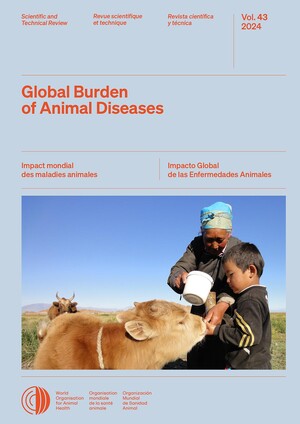
Influence of dietary supplementation and partial suckling on body weight and on lactation and reproductive performance of primiparous Boran (Bos indicus) cows in Ethiopia
Abstract
This study was conducted in the central highlands of Ethiopia during 1990-92 to examine the effects of diet and partial suckling on lactation and reproductive performance of Boran (Bos indicus) cows. Primiparous Boran cows were allocated to dietary supplementation or no supplementation with either milking or partial suckling based on body weight at calving. All cows received grass hay adlibitum and the supplemented groups were provided with additional concentrate feed which supplied 222 g/kg DM crude protein and 10 MJ/kg DM energy. Calves were weaned at 8 weeks of age. Mean (+-S.E.) dam calving and calf birth weight were 314+-11.4 and 25+-0.6 kg. Body weights at first postpartum oestrus and at conception were not affected by suckling. Supplemented cows however, were heavier at first oestrus and at conception than non-supplemented cows. Lactation length was longer and mean daily milk yield higher in suckled than in milked cows. Diet, however, did not influence either lactation length of daily milk yield. In suckled cows, mean daily milk yield declined sharply after weaning (week 9) and was lower by 38 and 43 percent of week 8 production in the supplemented and non-supplemented groups, respectively. The overall mean lactation yield was 212.4+-64.6 litres; with a significant diet X suckling interaction effect. Concentrations of milk fat, total protein and total solids were not affected by either diet or suckling treatment. The postpartum anoestrus interval was longer in non-supplemented than in supplemented cows, but did not differ between suckled and milked cows. The percentage of cows cycling by 150 days postpartum was higher in supplemented than in non-supplemented and in milked than in suckled cows. By this interval, a higher percentage of supplemented-milked (90 percent) cows cycled than in the other three treatment groups (48.5 percent). Pregnancy from the first insemsination ranged from 45.5 to 63.6 percent in the four treatment groups. It was concluded that although partial suckling extended the postpartum anoestrus interval, lactation length and milk yield were improved. The negative effects of partial suckling on postpartum reproduction could be overcome with the appropriate dietary supplementation. The economic trade-off between dietary supplementation, milk yield and reproduction has to be determined in partially suckled cows.
Citation
Journal of Agricultural Science;123 (pt.2): 267-273










